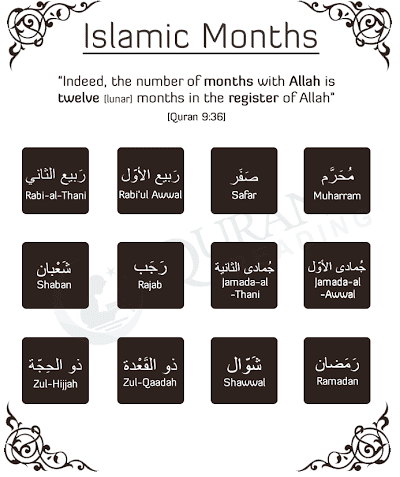

Although the raid was unsuccessful, because it was customary to name a year after a major event which occurred during it, that year became known as the Year of the Elephant, which was also the year that Muhammad was born.Īlthough most Muslims equate it with the Western year 570, a minority equate it with 571. On the other hand, Muhammad forbade the intercalary month (released the calendar from the seasons) near the end of his life, which implies a pre-Islamic year beginning near the vernal equinox because that is when the modern lunar year began during his last year.Ībraha, a governor of Yemen, then a province of the Christian Kingdom of Aksum (modern Ethiopia), attempted to destroy the Kaaba with an army which included an elephant (possibly several). However, the rainy season after which these months are named may have been different when the names originated (before Muhammad's time) or the calendar may have been imported from another region which did have such a rainy season. These imply a pre-Islamic year beginning near the autumnal equinox.

The two Rabi' months denote grazing and the modern Meccan rainy season (only slightly less arid than normal), which would promote the growth of grasses for grazing, occurs during autumn. It is assumed that the intercalary month was added between the twelfth month (the month of the pre-Islamic Hajj) and the first month (Muharram) of this pre-Islamic year. Whether the intercalary month (Nasi) was added in the spring like that of the Hebrew calendar or in autumn is debatable. The predecessor to the Islamic calendar was a lunisolar calendar which used lunar months, but was also synchronized with the seasons by the insertion of an additional, intercalary month, when required. Thus each numbered year is designated either H or AH, the latter being the initials of the Latin anno Hegirae (in the year of the Hijra.) Islamic years are also called Hijra years because the first year was the year during which the Hijra occurred - Muhammad's emigration from Mecca to Medina. Because this lunar year is about 11 days shorter than the solar year, Islamic holy days, although celebrated on fixed dates in their own calendar, usually shift 11 days earlier each successive solar year, such as a year of the Gregorian calendar. It is a lunar calendar having 12 lunar months in a year of about 354 days. The Islamic calendar or Muslim calendar, also called the Hijri calendar) is the calendar used to date events in many predominantly Muslim countries, and used by Muslims everywhere to determine the proper day on which to celebrate Islamic holy days.


 0 kommentar(er)
0 kommentar(er)
